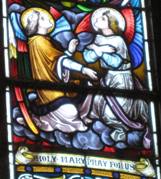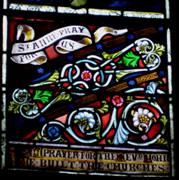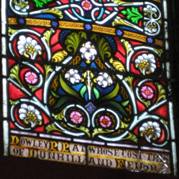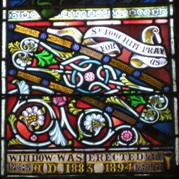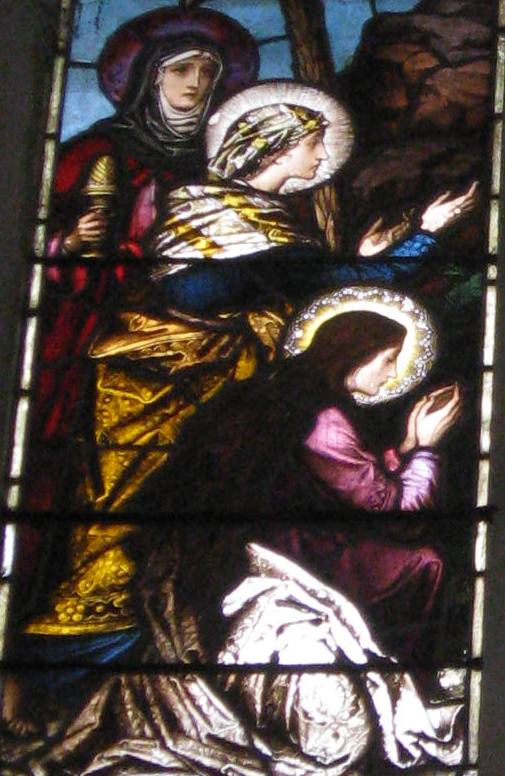Our Lady’s window
Our Lady is standing on a cloud above two angels who are kneeling on another cloud. She has her left foot on the head of a green snake or serpent. Our Lady is often seen crushing the head of the serpent in pictures and statues. It comes from a vision that St. Catherine Labouré received in 1830.
This is the serpent that tempted Eve in the Garden of Eden. It is often portrayed, as above, with a red apple in its mouth but, in fact, the type of fruit is not mentioned in the bible –
“Now the serpent was more crafty than any other beast of the field that the Lord God had made. He said to the woman, ‘Did God actually say, “You shall not eat of any tree in the garden”?'” [Genesis 3:1].
“So when the woman saw that the tree was good for food, and that it was a delight to the eyes, and that the tree was to be desired to make one wise, she took of its fruit and ate, and she also gave some to her husband who was with her, and he ate.” [Genesis 3:6].
In the Genesis story, the serpent represents evil or its personification, Satan. So the window shows Mary defeating evil.
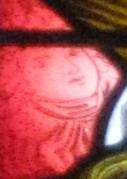
Did you notice the peculiar faces to the left and right of Mary’s head and shoulders? Click on the image to enlarge it and you will see the faces more clearly. Who do you think they are? Notice, too, the beautiful golden robe that one of the angels is wearing. The banner below the two angels says, “Holy Mary pray for us”.



